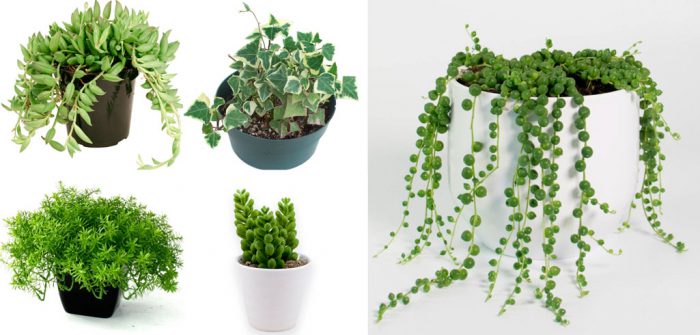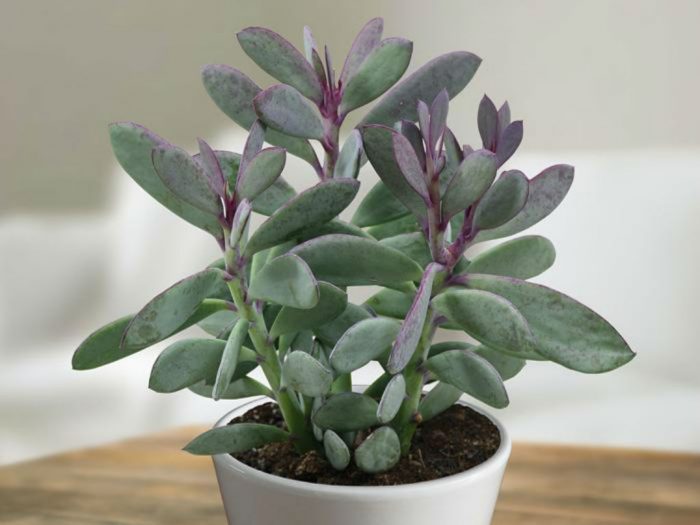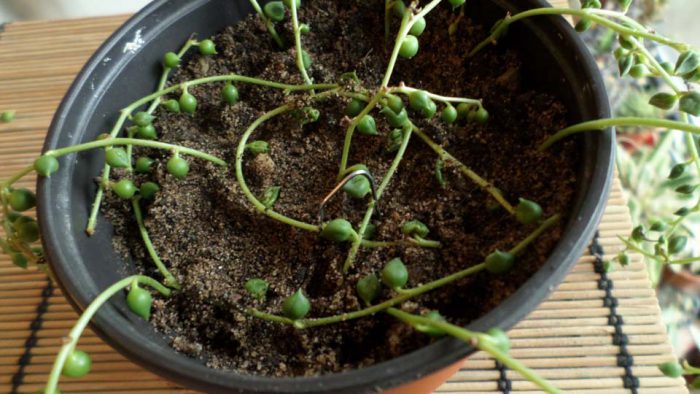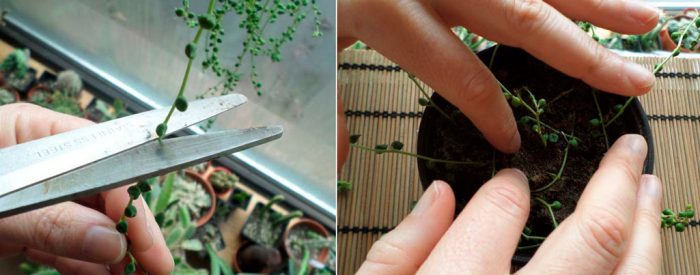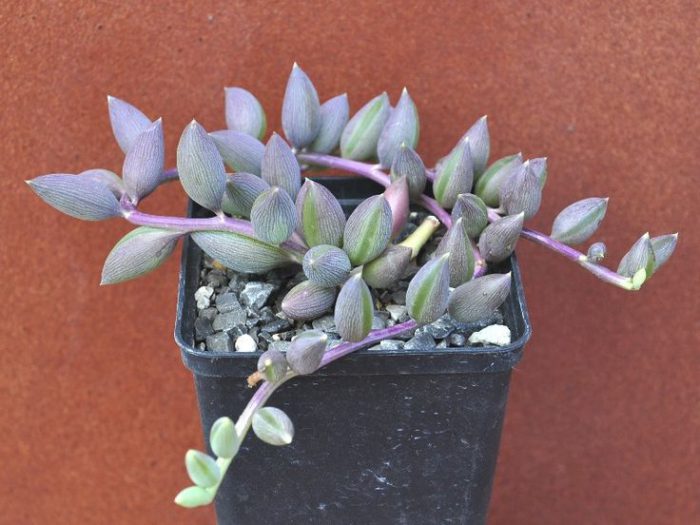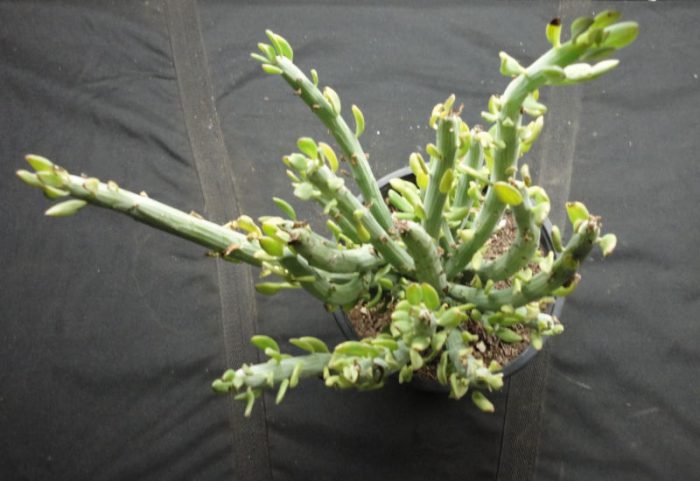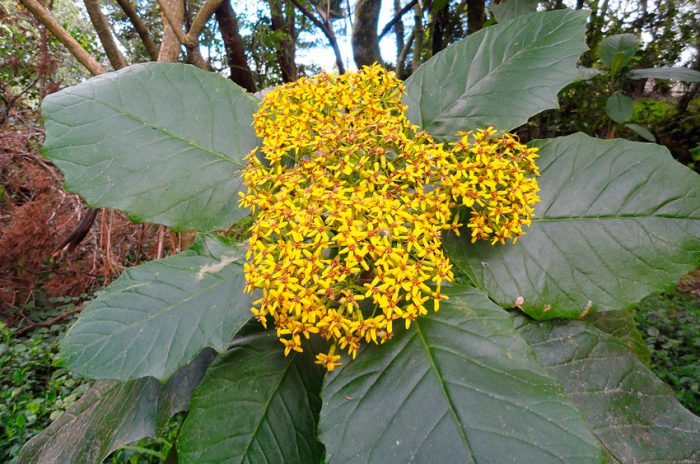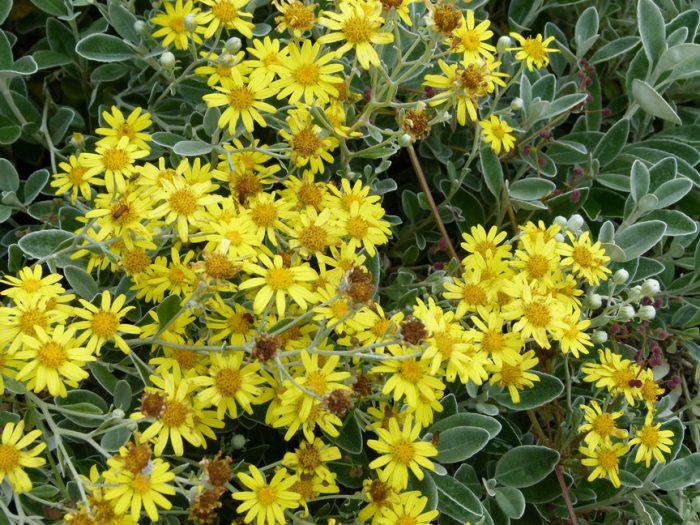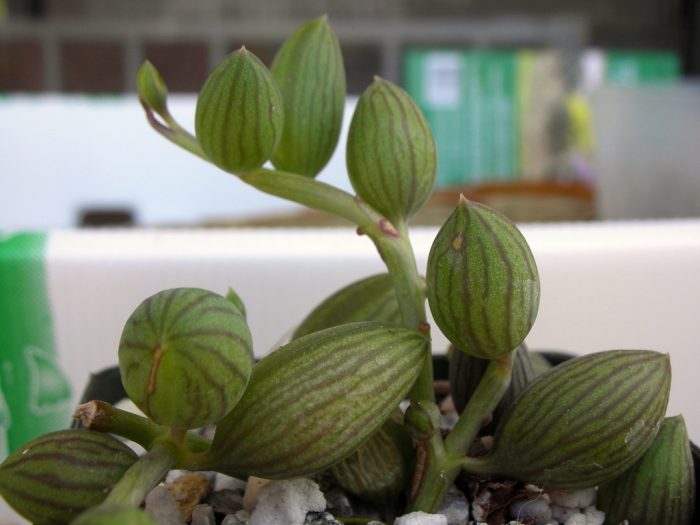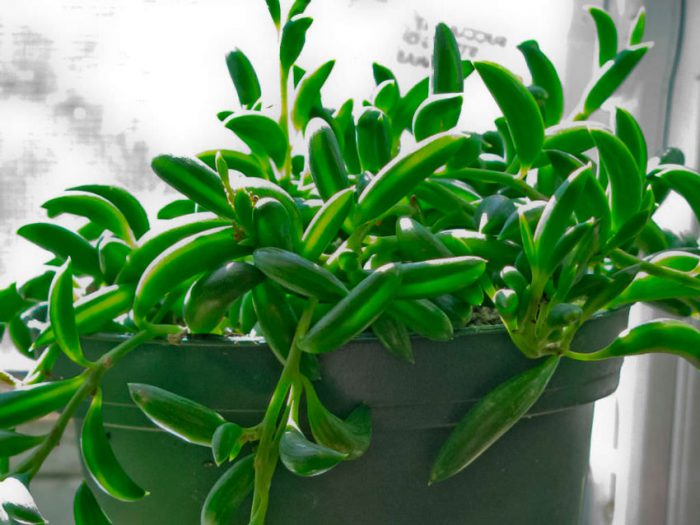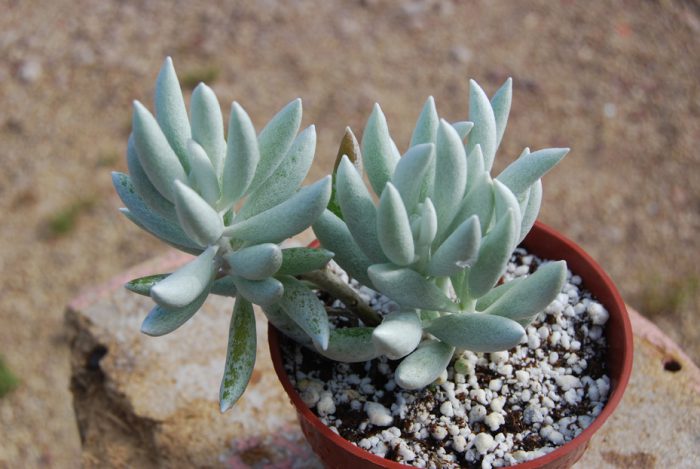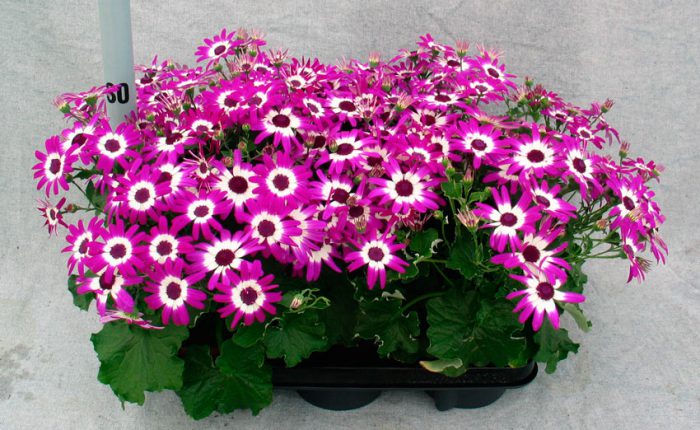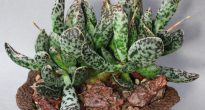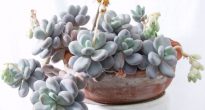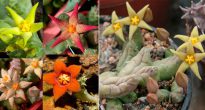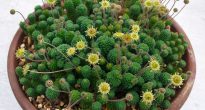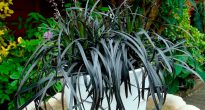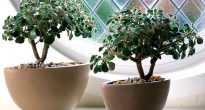Ragwort (Senecio) is directly related to the Asteraceae family. Such annuals or perennials are represented by shrubs, dwarf shrubs, herbaceous plants or small trees. You can meet them in any area of the planet Earth in different climatic zones.
Different types of such a plant have external differences. Their stems are both pubescent and naked. The leaves also differ in shape, for example, they are from obovate to elliptical, dissected or entire, pinnate, lobed, alternately located. Inflorescences are different - from large to small, and they are shaped like a basket. Such inflorescences are both single and collected in several pieces in panicles or shields.
A large number of representatives from this vast genus are quite popular with both gardeners and florists. They are grown in the garden and at home as decorative or potted plants, and are also cultivated for cutting or used to decorate bouquets.
Content
- 1 Home care
- 2 Main types
- 2.1 Euphorbiaceae (Senecio anteuphorbium)
- 2.2 Articulated groundwort (Senecio articulatus)
- 2.3 Large-leaved groundwort (Senecio grandifolius)
- 2.4 Grey's groundwort (Senecio greyi)
- 2.5 Herrianus (Senecio herrianus)
- 2.6 Klein's cross (Senecio kleinia)
- 2.7 Red rose (Senecio pulcher)
- 2.8 Large-reed groundwort (Senecio macroglossus)
- 2.9 Rooting groundwort (Senecio rаdicans)
- 2.10 Creeping groundwort (Senecio serpens)
- 2.11 Rowley's groundwort (Senecio rowleyanus)
- 2.12 Stapeliiformis (Senecio stapeliiformis)
- 2.13 Haworth's groundwort (Senecio haworthii)
- 2.14 Bloody groundwort (Senecio cruentus)
Home care
Illumination
A place with a lot of light is required, while the plant simply needs direct rays of the sun. The rosewood feels best on a western or eastern window.
Temperature regime
In the warm season, such a plant requires a temperature in the range of 22-26 degrees. With the onset of autumn, it is recommended to move it to a cooler place, and keep it at a temperature of 12 to 15 degrees throughout the entire autumn-winter period. However, make sure that the room is not colder than 7 degrees.
Humidity
Feels great at low air humidity inherent in city apartments. It is not required to additionally moisten it from the sprayer.
How to water
In the warm season, watering should be moderate.So, the flower is watered 1-2 days after the topsoil dries up. With the onset of the autumn period, watering is gradually reduced. In winter, it should be very poor, or the plant should not be watered at all.
Well-settled soft water is suitable for this purpose. Make sure that there is no stagnation of water in the soil, as this is extremely harmful to the groundwort.
Top dressing
Top dressing is carried out from March to August, once every 2 weeks. For this, fertilizer for succulents is used.
Earth mix
A suitable soil should be loose, neutral acidity and rich in nutrients. To prepare the soil mixture, it is necessary to combine sand and leafy earth (1: 2). You can use a commercial soil mixture for succulents and cacti.
Transplant features
Young specimens require an annual transplant and must be done in the spring. Older plants can be replanted once every 2 or 3 years.
Reproduction methods
For reproduction, seeds, layering or cuttings are used.
On the handle you need to cut off a part of the stem from 8 to 10 centimeters long and remove 2 or 3 lower leaves from it. Leave the cutting outdoors for a few hours to dry. For rooting, small pots filled with sandy soil are used. They should be placed in a warm and well-lit place. After complete rooting, a transplant is carried out, and several cuttings are planted in 1 pot at once.
Seeds are not propagated as often as cuttings... Sow only fresh seeds. Several germinated seeds are sown in one pot at once. As a result of such sowing, a beautiful lush bush can be obtained in a relatively short time. Watering is carried out using a sprayer. After the onset of the cotyledon phase in the seedlings, they should be transplanted into separate pots with a diameter of 5 centimeters.
To get layering, you need to put small pots of soil in the immediate vicinity of an adult bush. Then healthy and long stems must be pressed to the surface of the substrate in several pieces. After rooting, the shoots should be carefully trimmed.
Pests and diseases
Quite resistant to diseases and pests. However, if the rules of care are violated and inappropriate conditions of detention, spider mites, aphids, worms and so on appear. And also the groundwort can get sick with gray rot and powdery mildew.
- Pelargonium greenhouse aphid - settles on young shoots, leaves and inflorescences. Yellowing of the foliage is observed, the inflorescences become brown, and the buds stop developing. To destroy pests, it is required to maintain high humidity by systematic spraying with lukewarm water. If the infection is strong, then insecticide treatment is needed.
- Spider mite - foliage becomes brown, there is a cobweb on its seamy side. The pest loves warmth and low humidity. To destroy it, you should maintain high humidity and give the plant a warm shower. If the infection is strong, then Actellic treatment is needed.
- Citrus and seaside mealybugs - from the eggs on the foliage, worms appear, feeding on the sap of the plant. Treatment with alcohol or soap solution will be required. If the infection is strong, then an emulsion of karbofos is needed.
- Powdery mildew - the appearance of a whitish powdery coating on the surface of stems, foliage and inflorescences. The introduction of only nitrogen fertilizers into the soil leads to the rapid development of the disease. The affected parts of the flower should be removed and treated with a foundation (for 1 liter of water, 1 gram of the product).
- Gray rot - the appearance of dry spots on the surface of the leaves, which have a yellowish border. It develops due to overflow, poor lighting, low temperatures. Place the plant in proper conditions. Treat with copper oxychloride.
Possible growing difficulties
- The leaves dry, turn brownish and fall off - too hot, too dry air, irregular or poor watering. In the presence of a spider mite.
- On the surface of the foliage, brownish dry specks - most likely burns from direct midday sun rays (in the summer months).
- Brownish-brown spots may be accompanied by yellowing - improper watering (stagnant water in the soil, cold water, frequent watering in rainy weather).
- Small leaves, elongated, low-leafed stems - poor lighting.
- The variegated color of the foliage disappears (it becomes just green) - little light or the root system is cramped in the pot.
Main types
Euphorbiaceae (Senecio anteuphorbium)
This deciduous shrub is a perennial. In height, it can reach from 1 to 1.5 meters, has erect, succulent, rounded stems and one and a half centimeter thick. Greenish-gray small leaves reach 15–35 millimeters in length and 5–40 millimeters in width. Such lanceolate leaf plates are rather thick, in the upper part they have a short spine, while the central vein is highly developed. There are many inflorescences-baskets, consisting of yellowish-white flowers.
Articulated groundwort (Senecio articulatus)
These not very tall deciduous shrubs are perennials. They are highly branched and can grow up to half a meter in height. The pale gray dissected branches are rounded and about 2 centimeters thick. Pale gray thick leaves are either serrate-cut or dissected. They have a long petiole. There are several pieces of inflorescences of baskets forming shields. The flowers are yellow.
Large-leaved groundwort (Senecio grandifolius)
These are evergreen perennial low trees or shrubs (from 2 to 3 meters in height). On the surface, the trunk, which is branched in the upper part, has a huge number of warts. Elliptical leaves are salbo-heart-shaped or rounded at the base, reaching from 10 to 30 centimeters in length and 15 centimeters in width. They are notched along the edge, serrate with clearly visible teeth. The seamy side of the foliage is pubescent, and the front is smooth. Small baskets of the inflorescence are located in the upper part of the stems, while they form large and rather dense shields. The flowers are yellow in color.
Grey's groundwort (Senecio greyi)
These are evergreen shrubs that are perennials, reaching a height of 2 to 3 meters and having white-felt stems. Whole-edged leathery ovoid leaves can be 3 to 10 centimeters long and 1.5 to 3.5 centimeters wide. The seamy side is whitish-tomentose, and the front is bare, but with a strongly pubescent central vein. The length of the petiole is from 1.5 to 3 centimeters. Inflorescences-baskets in width reach 2.5 centimeters and are corymbose. There are from 12 to 15 reed yellow marginal flowers. And many of the middle flowers are bell-shaped.
Herrianus (Senecio herrianus)
Such a perennial has weakly branched, creeping, rounded stems. Thick leaves reach 2 centimeters in length and 1.5 centimeters in width, there is a spur in the upper part. There are many lines on the surface of the sheet plate, and there is also a relatively wide strip (from 2 to 3 millimeters). Inflorescences-baskets are small.
Klein's cross (Senecio kleinia)
Such succulent evergreen shrubs are perennials, and they reach a height of 2 to 3 meters. The whorled thick articulated stems reach 40 centimeters in length. On their white surface are dots and lines of dark color. The segments can be separated quite easily. In the upper part of the stems there are elongated elliptical leaflets, reaching from 9 to 15 centimeters in length, and from 1 to 2 centimeters in width. They are greenish-gray in color and are short-pointed. Small yellowish flowers are corymbose.
Red rose (Senecio pulcher)
It is a succulent and perennial herb. The length of its stems varies from 30 to 100 centimeters. The oblong-lanceolate leaf plates have serrated lobes, stem, sessile, basal with petioles. There are 10 inflorescence baskets, which are located corymbose, and reach from 5 to 7 centimeters in width. The tubular flowers are yellow, and the reed flowers are deep purple or pale purple.
Large-reed groundwort (Senecio macroglossus)
This creeping perennial plant is a succulent plant. Its stem reaches a height of 3 centimeters and is unbranched and woody. The petiole is one centimeter long. Lance-shaped leaves have 3-5 pointed lobes and can reach 8 centimeters in length. Flowers with a spherical middle part (diameter from 5 to 6 centimeters) and light yellow tongues can be arranged either one by one or in pairs.
The variety "Variegatus" is the most popular among flower growers. He has chaotically located, yellowish spots on the leaf plate.
This plant is undemanding to care for and can shed all foliage. The soil should be well-drained and sandy. It is better to place it in a bright, but not very sunny place. During intensive growth, water should be moderate, and in winter, stop watering altogether. Propagated by cuttings. Cuttings root easily in practically dry sand. The stalk must be placed in a warm place, which does not get direct rays of the sun.
Rooting groundwort (Senecio rаdicans)
These herbaceous evergreen perennials are succulents. They have creeping, branched, rapidly rooting stems, reaching a length of 30-50 centimeters. Alternate greenish-gray leaves are one centimeter thick, and their length is 2-3 centimeters. The leaf plate has a sharpness on both sides, and longitudinal lines of a dark shade are located on the surface, as well as a dark green wide strip. The inflorescences of the basket are arranged in pairs or singly. Long enough peduncle. The flowers are snow-white.
Creeping groundwort (Senecio serpens)
This evergreen shrub is a perennial. Its height is only 20 centimeters, and rather thick bluish stems are 5-7 millimeters thick. In the upper part of the shoots are linear-lanceolate leaves, which are 3 to 4 centimeters long and 0.7 to 0.8 centimeters wide. The short-pointed leaf blade is colored greenish-gray with a bluish tint. On the flower-bearing stem, there are many inflorescence baskets. The flowers are white.
Rowley's groundwort (Senecio rowleyanus)
This evergreen plant is a perennial and is distinguished by its rapid growth. Thin hanging or creeping shoots in length can reach from 20 to 60 centimeters. Green leaf plates have a spherical shape with a pointed tip and a centimeter wide. Inflorescences are spherical. White flowers have a cinnamon aroma.
Stapeliiformis (Senecio stapeliiformis)
These herbaceous succulent plants are perennials. The barrel is two centimeters thick and can be up to 20 centimeters high. It branches at the base, and a small number of spines are located on its surface. Small leaves (5 millimeters long) are dark greenish-gray. Inflorescences-baskets are located on short peduncles. The color of the flowers is red.
Haworth's groundwort (Senecio haworthii)
This perennial is a bushy plant that can reach a height of 30 centimeters. Smooth erect shoots can be either weakly branched or single. Spirally arranged sheet plates have a cylindrical shape, tapering at the ends.On the surface of the leaves there is a white-silver felt layer, and in length they can reach from 3 to 5 centimeters. Spherical flowers are collected in the same inflorescence shape and have an orange or yellow color.
This plant is quite demanding to care for. Suitable soil should be well-drained, sandy. You need to place it in a well-lit place, but without direct sunlight. During the period of active growth, watering should be moderate, and in winter the plant needs a dry content. The fact is that such a plant is very sensitive to excess water. Propagated by cuttings. Dry sand should be used for rooting cuttings. The plant is placed in a warm place that is protected from direct sunlight.
Bloody groundwort (Senecio cruentus)
Also called bloody cineraria - this erect plant is an annual and reaches a height of 60 centimeters. Dark green pubescent soft leaves have an oval or triangular shape. The seamy side has a red tint. Flowers are similar in shape to daisies and can be painted in a variety of color shades. Their diameter can vary from 2.5 to 8 centimeters.

